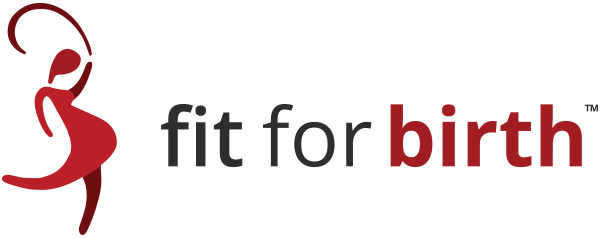Last Updated: 2/4/25
This is part 2, where we give you a basic overview of where to go for more education, from various corrective exercise organizations around the world. Part 2 will also wraps up what it means to fit your corrective exercise practice into a holistic approach.
(Click here for Part 1, which will help you understand corrective exercise, and how it can be useful in pregnancy/postpartum!)
Types of Corrective Exercise Methodologies
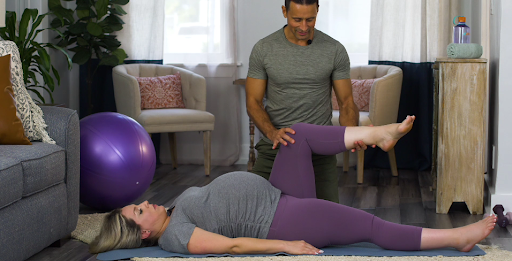
This section begins an overview of the various corrective exercise methodologies. The intention is to give fitness professionals an insight into various ways to continue your education (CEU’s/CEC’s) in corrective exercise.
DNS & Infant Development Exercises for Adults
Dynamic Neuromuscular Stabilization (DNS) is a rehabilitation approach based on developmental kinesiology, meaning it utilizes our movement patterns from early childhood to improve motor function throughout life.
The “Prague School” of Rehabilitation and Manual Medicine was established by Pavel Kolar, drawing on the work of his mentors, professors of neurology and rehabilitative movement, Vclav Vojta, Karel Lewit, Vladimir Janda, and Frantisek Vele.
DNS uses the predictable movement patterns that are observed in infants as they grow from birth through the first year of life. These patterns are genetically predetermined and essential for proper motor development and central nervous system maturation.
KEY CONCEPTS of DNS
- Spinal stabilization first: “Any purposeful movement is closely related to the spinal stabilization based on the programs which come into play during early development.”[1]
- Stabilization in the sagittal plane occurs first and is required for erect posture.
- Phasic (faster) movement can only happen after sagittal stabilization occurs.
- Primal movements like stepping forward and grasping are all related to trunk rotation.
- Intra-Abdominal Pressure (IAP): DNS emphasizes the role of intra-abdominal pressure to support the spine and create a stable base for limb movement. Proper breathing techniques, which are integral to DNS, help to maintain this pressure and stability.
- Homolateral before contralateral: Homolateral patterns will occur initially, which means utilizing the same side limbs. For example, an infant who has rolled onto its right side will support him or herself with the right arm & leg, while reaching with the left arm and leg. After the 4.5 month to 6 month time frame, stepping forward and support occurs on opposite sides, as in crawling, which is a contralateral pattern.
Some milestones patterns of musculoskeletal activity include:
- 4 months – supine leg flexion
- 4.5 months – grasping beyond midline
- 5 months – turning to lie on the side
- 6 months – turning over
- 7 months – sidelying, supporting on elbow
- 8 months – sitting up in oblique position
- 12 months – walking sideways

ASSESSMENT in DNS
DNS assessments typically involve developmental positions and movements that mimic the motor patterns of infants. The assessment typically involves evaluating the body’s ability to naturally engage the correct stabilizing muscles.
These include:
- Supine (lying on the back): Observing natural spine curvature and abdominal tension without the influence of gravity.
- Prone (lying on the stomach): Evaluating how the back muscles activate and how the patient lifts their head and upper body.
- Quadruped (all fours) + Crawling: Assessing the stability and coordination of the limbs while maintaining a neutral spine.
- Squatting: Checking the integration of movement patterns that should have been established in infancy.
SCIENTIFIC RESEARCH mentioning DNS
- A 2013 study (co-authored by the leader of Prague School, Pavel Kolar), stated the opinion that dynamic neuromuscular (core) stability is crucial for peak athletic performance and cannot be achieved solely through the strength of the abdominals, spinal extensors, gluteals, or any other specific muscle group. Instead, authors wrote that core stability results from the precise coordination of these muscles and the regulation of intra‐abdominal pressure by the central nervous system. The DNS approach, “provides functional tools to assess and activate the intrinsic spinal stabilizers in order to optimize the movement system for both pre‐habilitation and rehabilitation of athletic injuries and performance.”[2]
- A 2020 study wrote that DNS is being “used successfully in rehabilitation of a wide variety of neurological and musculoskeletal conditions,” including pediatric and sports injury cases.[3]
- Another 2020 study of 34 females found that 6 weeks of DNS improved functional movements better than standard physical fitness training.[4]
[COMING SOON: For more on Infant Development Exercises for Adults, see COMING SOON on our sister site, www.ExerciseForLongevity.life. COMING SOON]
PRI – Postural Restoration Institute
The Postural Restoration Institute (PRI) is an organization that focuses on the biomechanics of postural alignment and asymmetry in the human body. PRI principles are based on the idea that the human body is not symmetrical and that these asymmetries, if not properly managed, can lead to various musculoskeletal dysfunctions and imbalances.
PRI was established in 2000 and is located in Lincoln, NE, USA. The organization strives “to achieve true balance using our bodies’ asymmetries.”[5] They call it an “unrecognized science that is applicable to everyone.”
KEY CONCEPTS of PRI
- Asymmetry and Balance: PRI teaches that natural asymmetries in body structure and function, such as the liver being on the right side and the heart on the left, lead to predictable patterns of muscle activity and posture.
- Zone of Apposition (ZOA): This concept refers to the area of the diaphragm that maintains its shape and position to effectively manage pressure and maintain functional breathing.
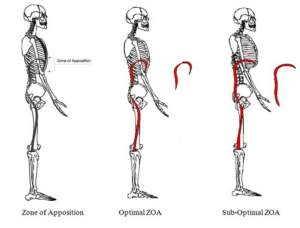
- Respiration and Ribcage Position: PRI emphasizes the role of breathing mechanics and rib cage position in maintaining balance and alignment. Therapists are trained to assess and correct dysfunctional breathing patterns that can affect spinal and pelvic positions.
- Posture is considered to be the reflection of patterned airflow.[6]
- Integrated Systems Approach: The approach considers not just the musculoskeletal system but also its interaction with other body systems such as the respiratory, circulatory, and nervous systems.
- Asymmetries to look for: Since the human body is not symmetrical, normal imbalances that are not regulated by the reciprocal function during walking, breathing or turning, create a strong pattern of structural weaknesses, instabilities, and musculo-skeletal pain syndromes.[7] Some of the places to recognize asymmetry in the body include:
- One or both legs turn out when standing
- Overdevelopment of certain muscles
- Limited or excessive hamstring length
- Lack of or excessive hip rotation
- Curvature of the spine
- Uneven rib height
- Uneven shoulder height
- Flat feet or high arches
- Facial asymmetries
- Inability to touch your toes
- Inability to squat
ASSESSMENT in PRI
PRI assessments involve evaluating postural imbalances and asymmetries. The assessment includes tests for pelvic position, rib cage orientation, and respiratory mechanics to understand how these factors influence overall body alignment.
PRI uses specific movements to evaluate how asymmetries affect body mechanics:
- Pelvic shifts: Assessing how the body stabilizes and shifts weight, which can indicate dominance in one side of the body.
- Breathing patterns: Evaluating the diaphragm’s function and its effect on rib cage and spinal position.
- Walking gait analysis: Observing the overall body mechanics during walking to identify compensatory patterns.
SCIENTIFIC RESEARCH mentioning PRI
- A 2024 study used PRI training on 42 participants with degenerative disc-associated lower back pain, and found PRI methods to be effective in improving joint range of motion, step length when walking, and performance.[8]
- A 2022 thesis on physically fit 18-26 year olds found, “no true changes of any pelvic patterns but anecdotally reported less restriction in lower extremities following” PRI repositioning exercises.[9]
- A 2024 study that PRI promotes as relevant on its website concluded that “Pelvic repositioning exercise can significantly improve contractility of PFMs.”[10] Although PRI itself is not mentioned in the abstract, pelvic realignment exercises were found to create pelvic symmetry and to improve pelvic floor muscle (PFM) contractility.
FRS: Functional Range Systems (FRC – Functional Range Conditioning)
Functional Range Systems (FRS) is an overarching framework designed to improve musculoskeletal health, mobility, and performance. Developed by Dr. Andreo Spina, the system includes manual treatments (Functional Range Release), mobility development (Functional Range Conditioning – FRC) and Kinstretch (an exercise class that utilizes FRC). FRC has 3 main goals: mobility, joint strength, and body control.[11]
KEY CONCEPTS of FRC
- Mobility Development: FRC focuses on expanding and developing the usable range of motion, which encompasses flexibility and the strength to control movements throughout the entire range. The key component is active range of motion.
- Joint Health: The system emphasizes the importance increasing synovial fluid circulation within the joint, which helps in nutrient delivery and waste removal.
- Motor Control: FRC aims to enhance the body’s ability to control and utilize the newly acquired ranges of motion by incorporating neurological and muscular training techniques that increase motor control.
- Progressive Overload: Similar to strength training principles, FRC uses progressive overload to adaptively condition the joints and surrounding tissues. By gradually increasing the demands on the tissues, they adapt by becoming stronger and more resilient.
ASSESSMENT mentioning FRC
Essentially, Functional Range Assessment (FRA) is the assessment phase to address the training phase of FRC. Some of the controlled movements used to assess and improve joint health include:
- Controlled Articular Rotations (CARs): Slow, intentional movements through the joint’s full range of motion to identify areas of restriction or discomfort. Think of taking every joint in the body through a precise, focused circle, intending to expand that circle at every angle over the 360 degrees.
End-Range Control tests: Assessing strength and control at the limits of joint mobility. Think about being in a Hip 90/90 or seated hamstring hurdler stretch, and lifting one of your feet/legs from the floor, without using your hands.
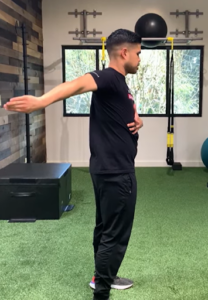
- There is a 2023 case study on a single participant with frozen shoulder (adhesive capsulitis). The study utilized a physiotherapy home program of physical and mental exercises, as well as a steroid injection. FRC was one of the modalities used. The paper provides an argument for using a transdisciplinary approach to manage frozen shoulders, “as part of the ongoing rehabilitation and re-acquisition of normal range of movement and their functionality.”[13]
- Another 2024 study also recommended “[building] upon the differences in therapies” in an attempt to speed the recovery of injured dancers. Once again, FRC was one of the physical exercises mentioned as one of the options.[14]
MAT: Muscle Activation Technique
Muscle Activation Technique (MAT) is a unique approach to assessment and correction of muscular imbalances in the body, focusing on muscle weakness rather than tightness. Developed by biomechanics consultant, Greg Roskopf, MAT is designed to enhance the body’s performance and decrease pain through improved muscle function. “Modalities across the health and wellness industry claim to ‘activate muscles.’ The techniques within our process can definitively assess if a muscle is activated.”[15]
KEY CONCEPTS of MAT
- Weakness as the Root Cause: MAT really zeroes in on improving the ability of muscles to contract, rather than assuming that tightness is the primary cause of limitation and pain.
Muscle Activation / Corrective Contractions: MAT uses targeted isometric or slight isotonic contractions to “wake up” underperforming muscles. These submaximal contractions are intended to increase muscle strength and coordination. By improving the contractile capabilities of muscles surrounding a joint, MAT enhances stability and helps prevent injuries.
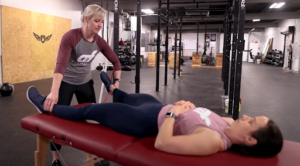
MAT assessments focus on the muscular system’s response to specific joint motions. The practitioner will evaluate the muscle’s ability to contract efficiently when a joint is moved through various ranges. If weaknesses or imbalances are identified, MAT techniques are applied to increase the muscle’s ability to contract and thus improve joint stability.
- Range of Motion Testing: Identifies limitations in range of motion at various angles of the 360 degree spectrum, and including internal and external rotation. For example, can the client in supine raise their leg into the air, overcoming their own inflexibility?
- Strength Generation: MAT tests for how much strength a joint is able to produce in the 360 degree spectrum. Practitioners are taught to determine which muscles have decreased contractile efficiency by evaluating responses to very specific isolating tests. For example, does the force behind a client’s activation seem adequate, compared to other client’s activations?
- Comparative Analysis: Tests are often comparative, assessing symmetry between sides of the body to understand functional discrepancies.
SCIENTIFIC RESEARCH mentioning MAT
- A 2016 case study mentioned MAT as “a godsend that allowed my body to strengthen so it could cope with the strain it went through due to my illness.”[17] The subject of this report had a very rare autoimmune disease. The nature of the report, which was published in the European Journal of Sociology and Anthropology, was to “acknowledge the myth that Western biomedicine is omniscient” in hopes of minimizing the in order to minimize the poor treatment of people who have rare health problems.
McKenzie Method
The McKenzie Method, officially known as Mechanical Diagnosis and Therapy (MDT), is a renowned methodology developed by New Zealand physiotherapist Robin McKenzie in the 1950s. It specializes in diagnosing and treating musculoskeletal issues, particularly those involving the spine.
Initially recognized for its effectiveness in treating lower back pain, the McKenzie Method has expanded to address a variety of musculoskeletal conditions, promoting self-management and active patient involvement.
KEY CONCEPTS of the McKenzie Method
- Centralization Phenomenon: In the McKenzie Method, centralization refers to the phenomenon where pain that radiates from the spine to other parts of the body (like the arm or leg) moves back towards the spine’s midline. It’s a positive sign indicating that the treatment approach is effective and the underlying problem is improving.
- Mechanical Diagnosis: This system categorizes spinal disorders based on the response to repeated movements and sustained positions, directing specific treatment protocols.
- Multipronged Approach: Tailored exercises are prescribed to correct mechanical disturbances. Stabilization, strengthening, stretching, mobilization, injections, and decompression surgeries, are all considered tools in the tool box for McKenzie practitioners.
Patient Education & Empowerment:[18] “We do not fix patients, we teach patients and we assist patients to fix themselves.” “The patient’s symptoms will never make a mistake.”
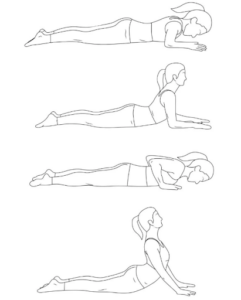
ASSESSMENT in the McKenzie Method
The McKenzie assessment is used primarily for spinal disorders. It involves a series of movements and positions to identify patterns of pain response. The goal is to determine whether the pain is centralized or peripheralized as the patient moves through these positions, which helps in classifying the problem and guiding treatment. McKenzie’s method is particularly focused on spinal movement.
- Detailed Spinal Evaluation: The assessment starts with a comprehensive history and a mechanical examination, which includes observing the effects of various movements and positions on the patient’s symptoms.
- Repeated end-range spinal movements: Movements like bending forwards, backwards, or sideways to provoke symptoms and identify the direction of preference.
- Sustained positions: Holding certain spinal positions to observe changes in symptoms.
- Directional Preference: The method identifies beneficial movement patterns that alleviate symptoms, known as directional preference.
SCIENTIFIC RESEARCH mentioning McKenzie
- A 2006 meta-analysis evaluated the McKenzie method for low back pain. The conclusion was, “There is some evidence that the McKenzie method is more effective than passive therapy for acute LBP; however, the magnitude of the difference suggests the absence of clinically worthwhile effects. There is limited evidence for the use of the McKenzie method in chronic LBP.”[19]
- A 2018 study compared the efficacy of MDT compared with placebo, in 148 patients with chronic lower back pain. The two things that the authors were looking for were changes in pain intensity, as well as actual disability after 5 weeks of treatment. Results stated that the MDT group had greater improvements in pain intensity at the end of treatment, but not for disability, as compared to placebo.[20]
Alexander Technique
The Alexander Technique is an educational process that teaches people how to improve physical postural habits, particularly those that affect movement and respiratory function. It was developed by Frederick Matthias Alexander in the early 20th century and has been utilized by performers and individuals seeking relief from pain through improved coordination. The focus is about teaching clients to move mindfully through life, changing movement habits in everyday activities.
KEY CONCEPTS of the Alexander Technique
- Being Present of How You Move: The technique teaches people to be aware of how they move, sit, stand, and do activities of daily life.
- Primary Control: This concept denotes the relationship between the head, neck, and spine, which determines the quality of the body’s overall coordination. For example, letting the head balance up on the neck can let the spine lengthen.
- Inhibition and Direction: Inhibition refers to the conscious pause individuals give themselves to prevent habitual reactions that interfere with optimal coordination. Direction involves thinking specific thoughts to bring about non-interfering, coordinated movement.
- End-Gaining: The Alexander Technique discourages focusing solely on the end result of an activity, advocating instead for attention to the process along the way.
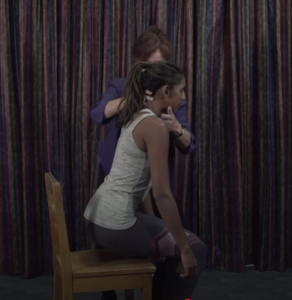
The Alexander Technique assessment focuses on observing the patient’s posture and movement patterns to identify habitual behaviors that may lead to tension or inefficiencies.[22] This observational approach guides the re-education process to promote more natural and efficient use of the body.
- Observational Assessment: The teacher observes the student’s habitual patterns of movement and posture during simple activities like sitting, standing, and walking.
- Guided Movement and Positioning: Using gentle hands-on guidance and verbal instructions, the teacher helps the student experience more efficient ways of moving and holding themselves.
- Self-Perception and Awareness: Students are taught to develop heightened kinesthetic awareness to recognize and change poor habits that lead to physical and mental stress.
- Functional Integration: The technique is taught in the context of daily activities to ensure that improvements in movement and posture are practical and sustainable.
SCIENTIFIC RESEARCH in Alexander Technique
- A 2011 systematic review of 18 publications concluded, “Strong evidence exists for the effectiveness of Alexander Technique lessons for chronic back pain and moderate evidence in Parkinson’s-associated disability. Preliminary evidence suggests that Alexander Technique lessons may lead to improvements in balance skills in the elderly, in general chronic pain, posture, respiratory function and stuttering, but there is insufficient evidence to support recommendations in these areas.”[23]
- A 2015 study compared acupuncture to Alexander technique, and concluded, “Acupuncture sessions and Alexander Technique lessons both led to significant reductions in neck pain and associated disability compared with usual care at 12 months.”[24]
Feldenkrais Method
The Feldenkrais Method uses gentle movement and directed attention to help people learn new and more effective ways of living the life they want. It was developed by Dr. Moshe Feldenkrais in the mid-20th century, who said, “We move according to our perceived self-image.”[25] This method aims to teach individuals how to live better through improved movement, increased efficiency, and reduced pain. It is often utilized by those recovering from injury, experiencing chronic pain, or seeking enhanced performance and ease in daily activities.
It is a system of movement re-education designed to teach, for example, how to feel each spinal segment with the same clarity as each individual finger.[26]
KEY CONCEPTS of the Feldenkrais Method
- Awareness Through Movement (ATM) & Functional Integration (FI): In order to improve body awareness, ATM uses verbal instruction while FI uses movement instruction.
- Movement, not just Exercise: Movement is larger than just exercise, and includes how we breath, digest, turn our head and take a step.
- Presence & Self-Awareness: The Feldenkrais Method emphasizes paying attention to habitual patterns, and learning to move with attention, intention, and sensory awareness.
- The Use of Imagination and Visualization: Imagining and visualizing movements are integral to the method, allowing for neurological changes that can translate into physical changes, even without performing the actual movements.
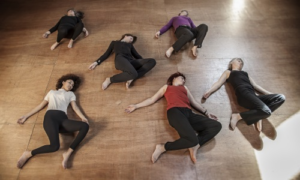
- Ongoing Observation and Interaction: The practitioner observes the client’s movements to identify patterns and areas of difficulty, like reaching upward with one arm from a seated position. Unlike more traditional forms, this assessment is ongoing and fluid throughout each session.
- Guided Movement and Positioning: Through touch and small, guided movements, practitioners engage in a form of kinesthetic dialogue with clients to raise awareness of habitual movement patterns and introduce new, more efficient patterns.
- Integration into Daily Activities: Assessment also involves discussing how the movements practiced during sessions translate into daily activities, ensuring that the lessons learned are not only understood but practically applied.
SCIENTIFIC RESEARCH mentioning Feldenkrais Method (FM)
- A 2015 systematic review of 7 studies concluded that there is “promising evidence that the FM may be effective for a varied population interested in improving functions such as balance.”[28]
- A 2020 study, “Found that research clearly supports the effectiveness of the FM for improvement of balance and chronic pain management.”[29]
Peter Attia, Outlive: The Science & Art of Longevity
Dr. Peter Attia, a physician focusing on the science of longevity, emphasizes a comprehensive approach to health that integrates strength training, cardiovascular fitness, and mobility for sustainable, injury-free living. His approach prioritizes long-term health and performance, with a specific focus on what he terms “the Centenarian Olympics” – the kinds of physical tasks that allow for independence into old age.
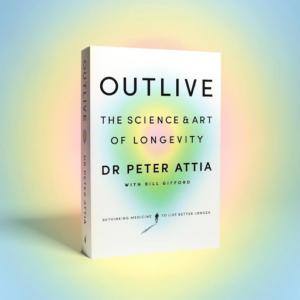
KEY CONCEPTS of Outlive:
- Longevity and Performance: The primary goal is to maximize lifespan while ensuring a high quality of life through enhanced physical fitness. This involves training for both the expected and unexpected physical challenges that come with aging.
- Stability Training: Before engaging in more rigorous strength and cardiovascular training, his program emphasizes the importance of stability. This foundational element supports injury prevention and enhances overall training effectiveness.
- Integrated Training Approach: Combining strength, endurance, and mobility exercises, their techniques focus on building a body that can perform well in various domains, from daily activities to more demanding physical challenges.
ASSESSMENT Concepts from Outlive:
- Health History: Initial assessments include a comprehensive review of health history, current fitness levels, and longevity goals.
- Stability Evaluations: Before progressing to complex movements, stability must be established. Exercises like single-leg balance, planks, and glute bridging are used.
- Functional Tasks for Longevity: Functional tasks such as walking lunges, squats and step-ups are used to evaluate an individual’s core stability, balance, and movement efficiency. The “sit-to-stand” test, where individuals attempt to rise to a standing position from the floor without using their arms or hands, assesses lower body strength, balance, and flexibility, serving as a longevity indicator.
- Individualized Approach: “While strength training and aerobic conditioning are relatively straightforward, everyone has very different issues with regard to stability. Thus, it’s impossible to give a one-size-fits-all prescription for everyone.”[30]
The SCIENTIFIC RESEARCH for Outlive
The entire book by Peter Attia, Outlive, is filled with rather in-depth analysis of many scientific research studies! The conclusions point to:
- Exercise being the #1 most research correlated item for longevity.
- Stability-training needing to be the foundation for exercise.
CHEK Institute: Corrective Holistic Exercise Kinesiology
The CHEK Institute, founded by Paul Chek in the 1990s, is an organization dedicated to advancing holistic health education, blending both Western and traditional approaches. The Institute emphasizes a comprehensive understanding of the interrelationships between lifestyle, movement, and wellness.
KEY CONCEPTS of the CHEK Institute
- Holistic Health Philosophy: The CHEK approach is grounded in the belief that optimal health requires a balance of physical, emotional, mental, and spiritual well-being.
- The Four Doctors: Paul Chek’s methodology emphasizes the importance of four ‘doctors’: Dr. Diet, Dr. Quiet, Dr. Movement, and Dr. Happiness. These represent the foundations for a healthy lifestyle, advocating for balanced nutrition, adequate rest, regular physical activity, and positive mental health.
- Primal Patterns: The CHEK Institute identifies specific movement patterns that are fundamental to human function.
Detailed Assessments: The CHEK system is known for its extraordinarily detailed assessments, including assessment tools like Blood Pressure Cuffs to monitor lumbar stability, and even those uniquely patented for their practitioners, like the CHEK Inclinometer.
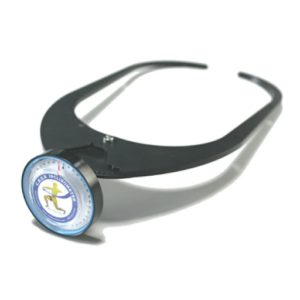
ASSESSMENT in the CHEK Institute
- Movement Analysis: CHEK practitioners are trained to assess movement patterns to identify dysfunctions and imbalances.
- Postural Assessment: Posture is closely monitored, understanding that it reflects the body’s overall health and biomechanical efficiency. Correcting postural deviations is a key component of the CHEK methodology to improve client well-being.
- Holistic Lifestyle Assessment: This comprehensive evaluation considers factors such as diet, stress, sleep patterns, and daily activity to develop a personalized wellness plan.
- Wellness Coaching: A significant aspect of the assessment involves understanding the client’s mental and emotional states, guiding them towards better stress management and emotional resilience.
FFB: Fit For Birth Method
Fit For Birth (FFB) emphasizes corrective exercises tailored to tackle prevalent musculoskeletal and physiological issues during and post-pregnancy. Our integrated approach reflects on the lifestyle of our ancestors versus today’s living conditions. We understand the need to leverage modern technologies but also consider them as potential contributors to our health disturbances, particularly in musculoskeletal health.
At the core of FFB is the inquiry, “Are we evolved to manage modern stressors?” This question highlights our possible inability to adapt to contemporary challenges, ranging from excessive sugar consumption to artificial lighting and prolonged sedentary behavior.
PLEASE CLICK HERE to view a simple overview of:
- Our 3 key concepts (Corrective Exercise, Holistic Approach and Comprehensive Assessments)
- Our 3 Assessments for fitness professionals to use in your practice: (Movement, Flexibility, Pelvic Floor)
- Our 3 steps for inspiring clients to train with you: (Identify their goals & needs, let them feel their current patterns, and provide an immediate change that they can feel in their body)
How to move from Exercise-focused Personal Trainer, to becoming a Comprehensive Holistic Personal Trainer
Exercise is the single most important research proven longevity factor for human beings. Without question, that is where you should focus your development as a pre & postnatal professional.
Corrective exercise is a step up from normal fitness, because it teaches people how to make sure they use the correct muscles, and therefore become far less likely to wear their joints away over time. When you help people get fit, you can do so on top of a foundation of whatever muscles they are currently using, or you can do so while teaching the right muscles to activate. It makes sense to learn some form of corrective exercise, and this article has given you a variety of options above!
Once you are getting consistent exercise results with your clients, you can add to your practice the possibility for even more comprehensive longer-lasting results. That’s where you’ll need to learn more about the rest of the 5 Foundations (Breathing, Exercise, Nutrition, Sleep/Lifestyle, Mind).
FFB’s PPCES addresses all 5 of these, with an emphasis on breathing and exercise. Here is how each of these factors can affect your client’s musculo-skeletal system, and overall well-being:
Breathing
About 20,000 times per day, one’s breath either stimulates or relaxes the body. Every breath either activates or has no connection to the core muscles. The diaphragm is both the primary breathing muscle and primary homeostatic regulator. Because of this, it helps regulate what the entire sympathetic and parasympathetic nervous system is doing, at any given moment. At the same time, it is a primary inner unit core muscle that determines whether or not core muscles synergize with movement muscles.
Movement
Exercise is indeed the single most important factor in longevity. This means that, day-by-day, it is the most powerful epigenetic force that determines how a person feels, as well as the function of their digestion, immunity, mental focus and more.
Nutrition
A food sensitivity can cause inflammation in the digestive system and shut off the inner unit core muscles. Amidst all the arguing of which foods are best, there are a few principles that really do apply to everyone. You owe it to your clients and your business to get have a simple solid nutrition appraisal plan that your clients can get excited about.
Sleep/Lifestyle
Today began at the time you went to be yesterday. Being tired slows core/posture muscle function, which specifically means that a person is more likely to damage their joints during exercise. Other lifestyle factors like phone usage and household toxins (kitchen/bathroom products) can demand your bodily resources into detoxification instead of core muscle function, for example.
Mind
Some sort of mind-calming and relaxing practice is necessary in today’s hyper world. We still have the same genetic requirements as our ancestors, but our world today is extraordinarily different. We have not yet evolved to be able to handle the amount of information, and this overwhelm is hurting our society. Being able to teach clients specific exercises to counteract this unavoidable fact is critical for holistic personal trainers.
Conclusion
In this article, we explored the multifaceted approach to corrective exercise, particularly its critical application during the pregnancy and postpartum periods. By understanding and implementing corrective exercises, fitness professionals can greatly improve their clients’ quality of life, ensuring a safer pregnancy and quicker postpartum recovery. This corrective exercise approach is the first step in expressing your holistic view of health, and it needn’t stop there.
Incorporating lifestyle and wellness beyond physical fitness also prepares practitioners to offer more specialized and valuable services. Mastering these techniques opens up pathways to financial prosperity through specialized service offerings and the potential to charge premium rates due to enhanced expertise. With a variety of global methodologies available, professionals have the opportunity to refine their skills and knowledge, tailoring their practices to meet the unique needs of their clients and standing out in a competitive market. This exploration into the depths of corrective exercise illustrates its indispensable role in fostering long-term health and stability, emphasizing the profound impact of well-informed, well-executed fitness regimens.
—————————–
If you love fun & research-based guidance as a fitness professional, or during your own pregnancy & postpartum, please check out these Fit For Birth offerings:
- Fitness & Wellness Professionals:
- FREE 1-hour CEC
- CEC/CEU Courses, including our Pre & Postnatal Corrective Exercise Specialist (PPCES), the world’s first holistic perinatal CEC/CEU!
- Monthly Elite Membership – Community. Monthly education. Business mentorship & work opportunities. $27/month.
- Pregnancy, Pre-conception & Postpartum:
—————————————————-
James Goodlatte is a Father, Holistic Health Coach, Corrective Exercise Practitioner, Speaker, Author, Educator, and the founder of Fit For Birth and Exercise For Longevity. Since 2008, when he found out he would be a father, his passion for holistic wellness shifted to children and families. Today, he is a driving force in providing Continuing Education Credits for the pre and postnatal world, with Fit For Birth professionals in 52 countries. James is a member of the First 1000 Days Initiative at the Global Wellness Institute, and professional longevity researcher & educator.
References
[1] [n.d.] Dynamic Neuromuscular Stabilization according to Kolar. Rehabilitation Prague School. (From DVD included in book by: Craig Liebenson: Rehabilitation of the Spine – A Practitioner’s Manual. 2006.) Retrieved 12/14/24 from https://www.rehabps.com/dns-video.html
[2] 2013. Frank, Clare. Kobesova, Alena. Kolar, Pavel. Dynamic Neuromuscular Stabilization & Sports Rehabilitation. International Journal of Sports Physical Therapy. Retrieved 12/14/24 from https://pmc.ncbi.nlm.nih.gov/articles/PMC3578435/
[3] 2020. Sharma, Kiran. Yadav, Aashish. Dynamic Neuromuscular Stabilization – A Narrative Review. International Journal of Health Sciences and Research. Retrieved 12/14/24 from https://www.ijhsr.org/IJHSR_Vol.10_Issue.9_Sep2020/IJHSR_Abstract.029.html
[4] 2020. Mahdieh, Leili. Zolaktaf, Vahid. Karimi, Mohammad Taghi. Effects of dynamic neuromuscular stabilization (DNS) training on functional movements. Human Movement Science. Retrieved 12/14/24 from https://www.sciencedirect.com/science/article/abs/pii/S016794571930274X
[5] [n.d.] PRI Website. Retrieved 1/12/25 from https://www.posturalrestoration.com/about/
[6] [n.d.] PRI Website. Retrieved 1/12/25 from https://www.posturalrestoration.com/the-science/
[7] [n.d.] PRI Website. Retrieved 1/12/25 from https://www.posturalrestoration.com/the-science/
[8] 2024. Salimi, et al. Scientific Journal of Rehabilitation Medicine. Retrieved 1/12/25 from https://medrehab.sbmu.ac.ir/article_1101683.html?lang=en
[9] 2022. Mills, Marisa, “Analysis of Pelvic Alignment Patterns Utilizing the Postural Restoration Institution Approach.” West Chester University Master’s Theses. 238. https://digitalcommons.wcupa.edu/all_theses/238
[10] 2024. Chehrehrazi, Mahshid. Nourbakhsh, Mohammad Reza. The Effects of Pelvic Repositioning Exercise on Pelvic Floor Muscle Contractility in Continent Individuals With Asymmetric Pelvis: A Double- Blinded Randomized Control Study. Journal of Women’s & Pelvic Health Physical therapy. Retrieved 1/12/25 from https://journals.lww.com/jwphpt/abstract/2024/04000/the_effects_of_pelvic_repositioning_exercise_on.2.aspx
[11] [n.d.] FRS website. Functional Range Conditioning. Retrieved 1/14/25 from https://functionalanatomyseminars.com/frs-system/functional-range-conditioning/
[12] Image: ProgressiveMotionPT.com https://www.youtube.com/@Progressivemotionptherapy/shorts
[13] 2022. Roncaglia, Irina. One size does not fit all – A transdisciplinary rehab program for adhesive capsulitis: A case report. Journal of Bodywork and Movement Therapies. Retrieved 1/14/25 from https://pubmed.ncbi.nlm.nih.gov/36775512/
[14] 2024. Karnik, Riya. A review of the most common injuries in dancers and therapeutic options. Critical Reviews in Physical and Rehabilitation Medicine. Retrieved 1/14/25 from https://www.dl.begellhouse.com/journals/757fcb0219d89390,4a3d6c967507d23a,5404cf9e2d9b3449.html
[15] [n.d.] MAT Website. What is Muscle Activation? Retrieved 1/14/25 from https://muscleactivation.com/muscle-activation/
[16] Image: Affiliate Physical Therapy. https://www.youtube.com/watch?v=tUI9Rfyp4HM
[17] 2016. Sarah Elizabeth Rich. (Mis)Understanding Sufferers with Rare Health Problems. European Journal of Sociology and Anthropology. Retrieved 1/14/25 from https://pdfs.semanticscholar.org/8b55/0cb229b6aa73b1e9a1cd21dcbd13ffbea0a5.pdf
[18] [n.d.] Mckenzie Institute USA website. Informational Videos. Retrieved 1/14/25 from https://www.mckenzieinstituteusa.org/videos.cfm
[19] 2006. Machado, et al. The McKenzie Method for Low Back Pain. A Systematic Review of the Literature With a Meta-Analysis Approach. Spine. Retrieved 1/14/25 from https://journals.lww.com/spinejournal/abstract/2006/04200/the_mckenzie_method_for_low_back_pain__a.22.aspx
[20] 2018. Narciso Garcia, et al. McKenzie Method of Mechanical Diagnosis and Therapy was slightly more effective than placebo for pain, but not for disability, in patients with chronic non-specific low back pain: a randomised placebo controlled trial with short and longer term follow-up. BMJ Journals. Retrieved 1/14/25 from https://bjsm.bmj.com/content/52/9/594.abstract
[21] Image: Diana Devitt_Dawson. Youtube. https://www.youtube.com/watch?v=oXqIuvav5hY&t=365s
[22] 2015. Diana Devitt-Dawson. Alexander technique lesson with Diana Devitt-Dawson. Youtube. Retrieved 1/14/25 from https://www.youtube.com/watch?v=oXqIuvav5hY
[23] 2011. Woodman, JP. Moore, NR. Evidence for the effectiveness of Alexander Technique lessons in medical and health-related conditions: a systematic review. International Journal of Clinical Practice. Retrieved 1/14/25 from https://onlinelibrary.wiley.com/doi/abs/10.1111/j.1742-1241.2011.02817.x
[24] 2015. Macpherson, et al. Alexander Technique Lessons or Acupuncture Sessions for Persons with Chronic Neck Pain: A Randomized Trial. Annals of Internal Medicine. Retrieved 1/14/25 from https://www.acpjournals.org/doi/abs/10.7326/m15-0667
[25] [n.d.] Feldenkrais Method website. About. Retrieved 1/14/25 from https://feldenkrais.com/about-the-feldenkrais-method/
[26] 2021. Future Life Now. What is Feldenkrais Awareness Through Movement? Youtube. Retrieved 1/14/25 from https://www.youtube.com/watch?v=NQjBXunhOVQ&t=51s
[27] Image: Feldenkrais Group Exercise Class. https://feldenkrais.com/beginners-guide-to-feldenkrais-method-lessons/
[28] 2015. Hillier, Susan. Worly, Anthea. The Effectiveness of the Feldenkrais Method: A Systematic Review of the Evidence. Evidence-Based Complementary and Alternative Medicine. Retrieved 1/14/25 from https://onlinelibrary.wiley.com/doi/full/10.1155/2015/752160
[29] 2020. Stephens, James. Hillier, Susan. Evidence for the Effectiveness of the Feldenkrais Method. Kinesiology Review. Retrieved 1/14/25 from https://doi.org/10.1123/kr.2020-0022
[30] 2023. Attia, Peter, MD. Gifford, Bill. Outlive: The Science & Art of Longevity. Harmony Books. (Chapter 13)
